Hung Nguyen-Kha
DT-Aided Resource Management in Spectrum Sharing Integrated Satellite-Terrestrial Networks
Jul 28, 2025Abstract:The integrated satellite-terrestrial networks (ISTNs) through spectrum sharing have emerged as a promising solution to improve spectral efficiency and meet increasing wireless demand. However, this coexistence introduces significant challenges, including inter-system interference (ISI) and the low Earth orbit satellite (LSat) movements. To capture the actual environment for resource management, we propose a time-varying digital twin (DT)-aided framework for ISTNs incorporating 3D map that enables joint optimization of bandwidth (BW) allocation, traffic steering, and resource allocation, and aims to minimize congestion. The problem is formulated as a mixed-integer nonlinear programming (MINLP), addressed through a two-phase algorithm based on successive convex approximation (SCA) and compressed sensing approaches. Numerical results demonstrate the proposed method's superior performance in queue length minimization compared to benchmarks.
GLUSE: Enhanced Channel-Wise Adaptive Gated Linear Units SE for Onboard Satellite Earth Observation Image Classification
Apr 16, 2025Abstract:This study introduces ResNet-GLUSE, a lightweight ResNet variant enhanced with Gated Linear Unit-enhanced Squeeze-and-Excitation (GLUSE), an adaptive channel-wise attention mechanism. By integrating dynamic gating into the traditional SE framework, GLUSE improves feature recalibration while maintaining computational efficiency. Experiments on EuroSAT and PatternNet datasets confirm its effectiveness, achieving exceeding \textbf{94\% and 98\% accuracy}, respectively. While \textbf{MobileViT achieves 99\% accuracy}, ResNet-GLUSE offers \textbf{33x fewer parameters, 27x fewer FLOPs, 33x smaller model size (MB), $\approx$6x lower power consumption (W), and $\approx$3x faster inference time (s)}, making it significantly more efficient for onboard satellite deployment. Furthermore, due to its simplicity, ResNet-GLUSE can be easily mimicked for \textbf{neuromorphic computing}, enabling ultra-low power inference at just \textbf{852.30 mW} on Akida Brainchip. This balance between high accuracy and ultra-low resource consumption establishes ResNet-GLUSE as a practical solution for real-time Earth Observation (EO) tasks. Reproducible codes are available in our shared repository.
A Semantic-Loss Function Modeling Framework With Task-Oriented Machine Learning Perspectives
Mar 12, 2025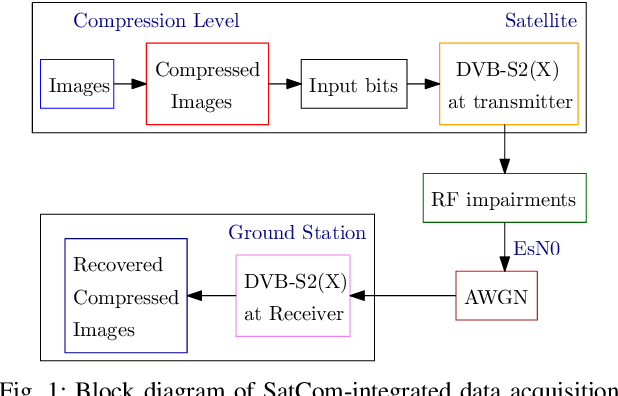
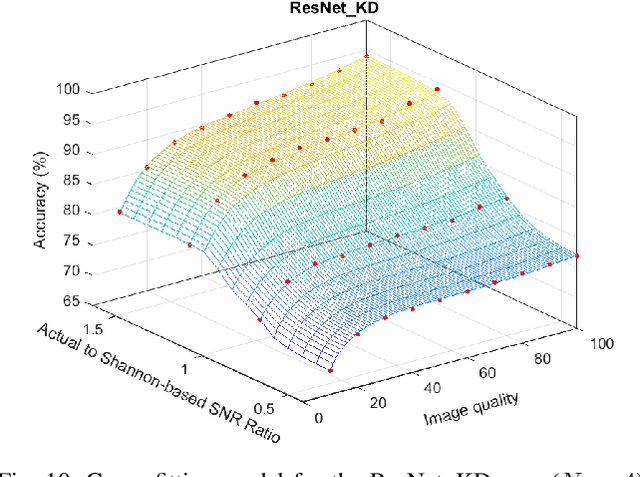
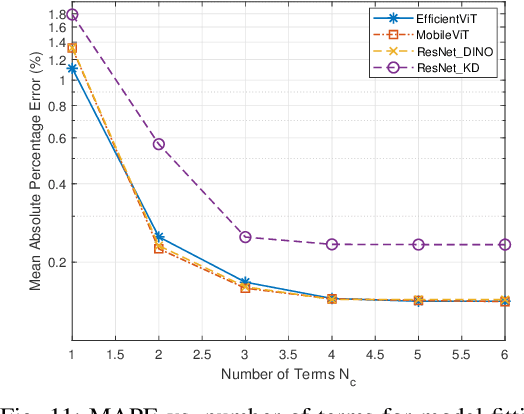
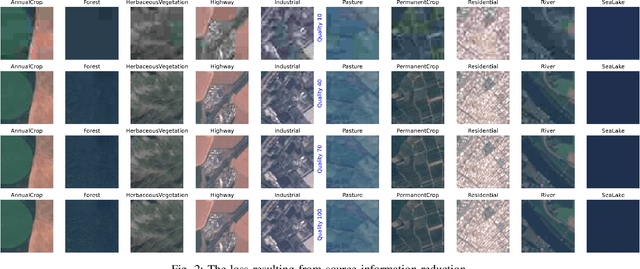
Abstract:The integration of machine learning (ML) has significantly enhanced the capabilities of Earth Observation (EO) systems by enabling the extraction of actionable insights from complex datasets. However, the performance of data-driven EO applications is heavily influenced by the data collection and transmission processes, where limited satellite bandwidth and latency constraints can hinder the full transmission of original data to the receivers. To address this issue, adopting the concepts of Semantic Communication (SC) offers a promising solution by prioritizing the transmission of essential data semantics over raw information. Implementing SC for EO systems requires a thorough understanding of the impact of data processing and communication channel conditions on semantic loss at the processing center. This work proposes a novel data-fitting framework to empirically model the semantic loss using real-world EO datasets and domain-specific insights. The framework quantifies two primary types of semantic loss: (1) source coding loss, assessed via a data quality indicator measuring the impact of processing on raw source data, and (2) transmission loss, evaluated by comparing practical transmission performance against the Shannon limit. Semantic losses are estimated by evaluating the accuracy of EO applications using four task-oriented ML models, EfficientViT, MobileViT, ResNet50-DINO, and ResNet8-KD, on lossy image datasets under varying channel conditions and compression ratios. These results underpin a framework for efficient semantic-loss modeling in bandwidth-constrained EO scenarios, enabling more reliable and effective operations.
Seamless 5G Automotive Connectivity with Integrated Satellite Terrestrial Networks in C-Band
Aug 27, 2024Abstract:This paper examines integrated satellite-terrestrial networks (ISTNs) in urban environments, where terrestrial networks (TNs) and non-terrestrial networks (NTNs) share the same frequency band in the C-band which is considered the promising band for both systems. The dynamic issues in ISTNs, arising from the movement of low Earth orbit satellites (LEOSats) and the mobility of users (UEs), are addressed. The goal is to maximize the sum rate by optimizing link selection for UEs over time. To tackle this challenge, an efficient iterative algorithm is developed. Simulations using a realistic 3D map provide valuable insights into the impact of urban environments on ISTNs and also demonstrates the effectiveness of the proposed algorithm.
An Experimental Study of C-Band Channel Model in Integrated LEO Satellite and Terrestrial Systems
May 21, 2024Abstract:This paper studies the channel model for the integrated satellite-terrestrial networks operating at C-band under deployment in dense urban and rural areas. Particularly, the interference channel from the low-earth-orbit (LEO) satellite to the dense urban area is analyzed carefully under the impact of the environment's characteristics, i.e., the building density, building height, and the elevation angle. Subsequently, the experimental results show the strong relationships between these characteristics and the channel gain loss. Especially, the functions of channel gain loss are obtained by utilizing the model-fitting approach that can be used as the basis for studying future works of integration of satellite and terrestrial networks (ISTNs).
Two-tier User Association and Resource Allocation Design for Integrated Satellite-Terrestrial Networks
Mar 19, 2023



Abstract:This paper presents a study of an integrated satellite-terrestrial network, where Low-Earth-Orbit (LEO) satellites are used to provide the backhaul link between base stations (BSs) and the core network. The mobility of LEO satellites raises the challenge of determining the optimal association between LEO satellites, BSs, and users (UEs). The goal is to satisfy the UE demand while ensuring load balance and optimizing the capacity of the serving link between the BS and the LEO satellite. To tackle this complex optimization problem, which involves mixed-integer non-convex programming, we propose an iterative algorithm that leverages approximation and relaxation methods. The proposed solution aims to find the optimal two-tier satellite-BS-UE association, sub-channel assignment, power and bandwidth allocation in the shortest possible time, fulfilling the requirements of the integrated satellite-terrestrial network.
LEO-to-User Assignment and Resource Allocation for Uplink Transmit Power Minimization
Feb 02, 2023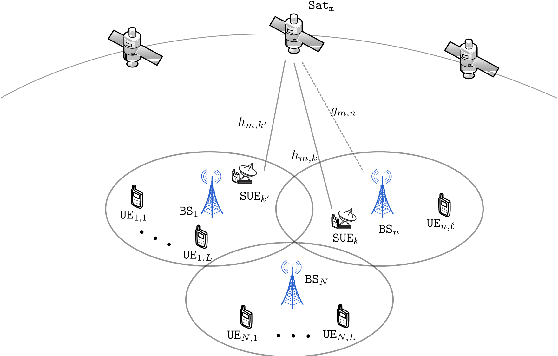
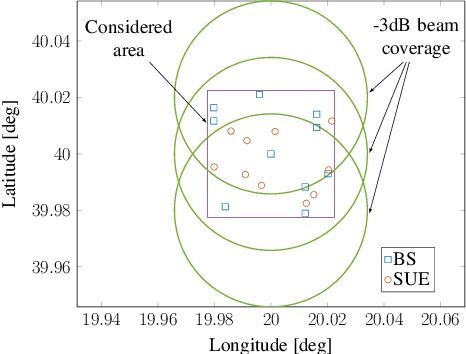
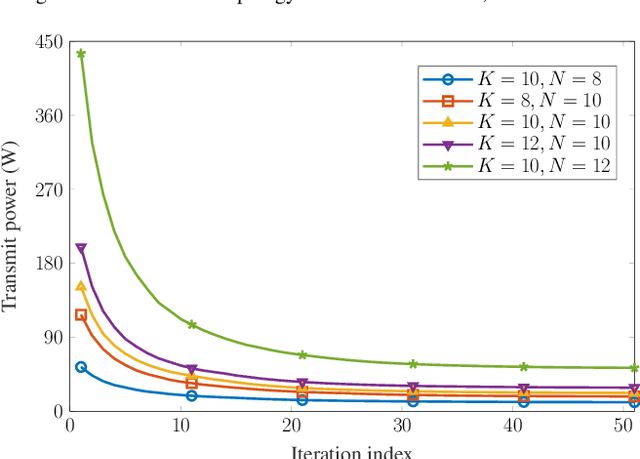
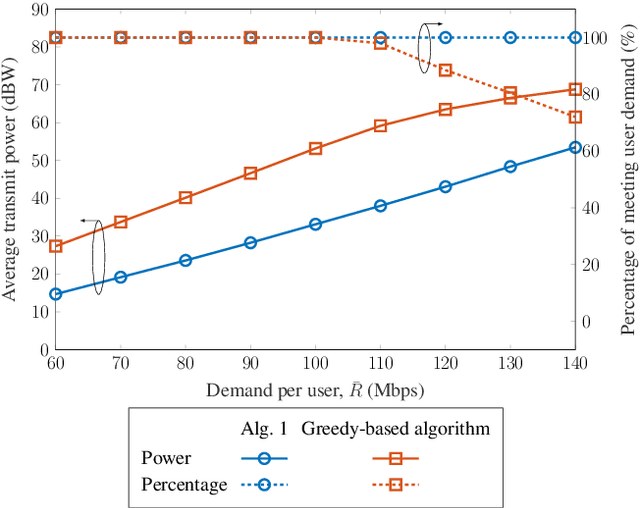
Abstract:This paper aims to develop satellite-user association and resource allocation mechanisms to minimize the total transmit power for integrated terrestrial and non-terrestrial networks wherein a constellation of LEO satellites provides the radio access services to both terrestrial base stations (BSs) and the satellite-enabled users (SUEs). In this work, beside maintaining the traditional SatCom connection for SUEs, the LEO satellites provide backhaul links to the BSs to upload the data received from their ground customers. Taking the individual SUE traffic demands and the aggregated BS demands, we formulate a mixed integer programming which consists of the binary variables due to satellite association selection, power control and bandwidth allocation related variables. To cope with this challenging problem, an iterative optimization-based algorithm is proposed by relaxing the binary components and alternating updating all variables. A greedy mechanism is also presented for comparison purpose. Then, numerical results are presented to confirm the effectiveness of our proposed algorithms.
Joint UAV Placement and IRS Phase Shift Optimization in Downlink Networks
Jul 14, 2022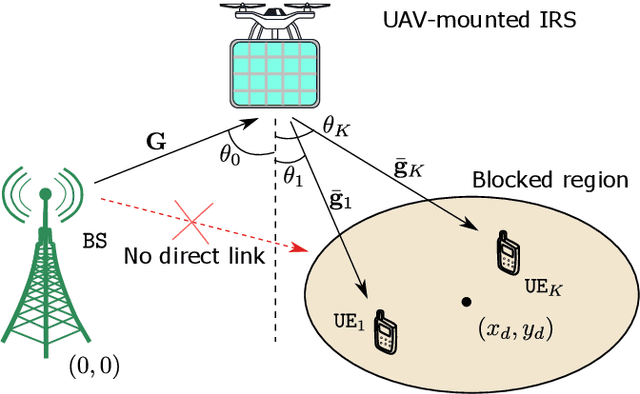
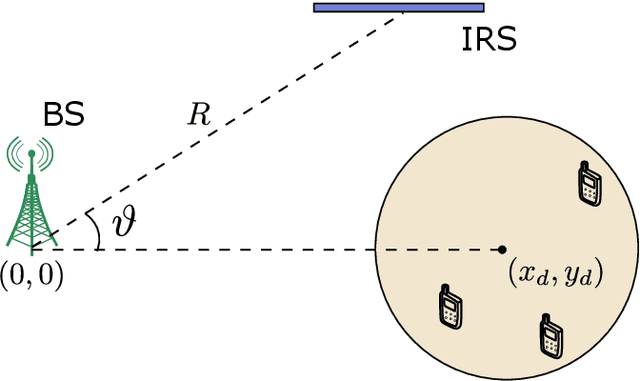
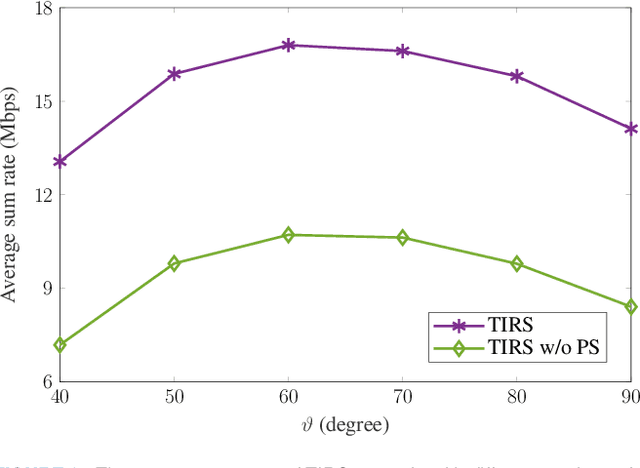
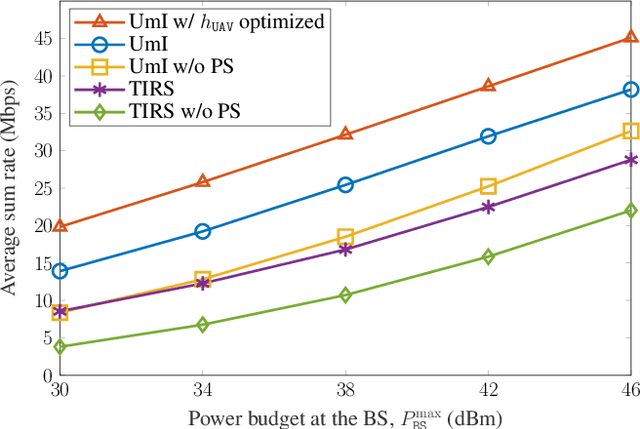
Abstract:This study investigates the integration of an intelligent reflecting surface (IRS) into an unmanned aerial vehicle (UAV) platform to utilize the advantages of these leading technologies for sixth-generation communications, e.g., improved spectral and energy efficiency, extended network coverage, and flexible deployment. In particular, we investigate a downlink IRS-UAV system, wherein single-antenna ground users (UEs) are served by a multi-antenna base station (BS). To assist the communication between UEs and the BS, an IRS mounted on a UAV is deployed, in which the direct links are obstructed owing to the complex urban channel characteristics. The beamforming at the BS, phase shift at the IRS, and the 3D placement of the UAV are jointly optimized to maximize the sum rate. Because the optimization variables, particularly the beamforming and IRS phase shift, are highly coupled with each other, the optimization problem is naturally non-convex. To effectively solve the formulated problem, we propose an iterative algorithm that employs block coordinate descent and inner approximation methods. Numerical results demonstrate the effectiveness of our proposed approach for a UAV-mounted IRS system on the sum rate performance over the state-of-the-art technology using the terrestrial counterpart.
 Add to Chrome
Add to Chrome Add to Firefox
Add to Firefox Add to Edge
Add to Edge